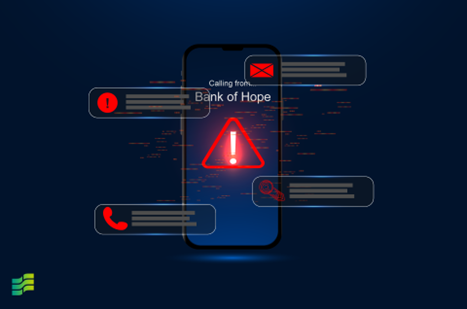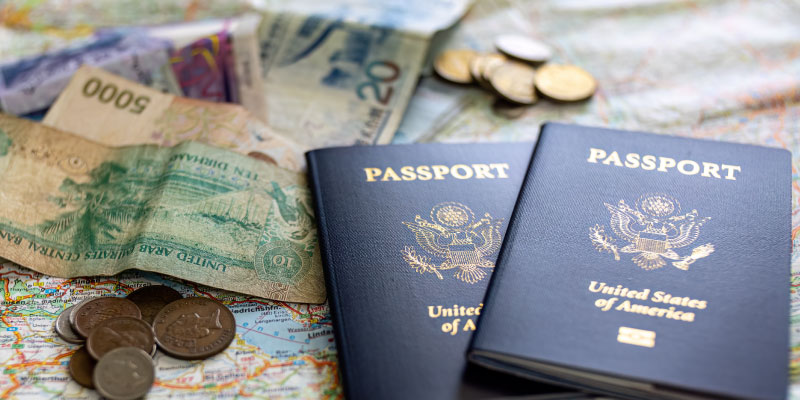Why Teaching Kids About Money Matters

 James Lee
Aug 29, 2024
James Lee
Aug 29, 2024
SVP, Western Regional Manager
Why have a checking account? To summarize the purpose in one word—convenience. It makes your money immediately available without you having to carry or store significant sums of cash. Checking accounts enables digital transactions, check or direct deposit from employers, and usage of ATMs. For this reason, one could argue that a checking account is the most important of all bank accounts, as it makes maneuvering in today’s world considerably easier.

Learn more about Bank of Hope’s many checking account options
There are multiple ways you can tap into your checking account for on-the-go transactions, including ATMs, debit cards, and checks. Additionally, there are typically no limitations on how often you add or withdraw money. Comparatively, most other account types restrict the frequency of transactions and offer less versatility.
Most employers prefer to pay staff using either direct deposit into a checking or savings account or with a physical check. If you’re unbanked, cashing this check will ultimately eat into your profits. As noted by Bamboo HR, “Walmart, for example, charges $4 for checks under $1,000. Unbanked employees face additional hurdles if they want to transfer their money, which they have to do with a money order. These cost anywhere from $1 to $10 per money order.”
The notion of offering an option other than paychecks, such as prepaid cards, may be met with some resistance from employers. Furthermore, prepaid cards typically come with fees that, when combined, are higher than the cost of having a checking account.
In short? One key reason to have a checking account is that it can ultimately help you retain more of your income.
Digitally accessible checking accounts like those from Bank of Hope allow for the automation of bill payments, whether that be your mortgage, water bill, or car payments. Not only does this help you dodge any late fees, but also helps reinforce your credit score which factors in the timeliness of payments.
Apps like Venmo and Zelle have made casual exchanging of money easier than ever, whether it be to cover your half of a bar tab or pay the babysitter. Zelle and some other apps require a checking or saving account to set up an account on their platform.
Another reason to open a checking account? Bank of Hope and other reputable institutions enforce advanced security measures to protect account holders’ funds, including encryption and fraud monitoring.
Also, in the very unlikely case of insured banks’ failure, funds in checking accounts are insured by the FDIC in the United States, guaranteeing that you won’t lose your money. FDIC insurance coverage is up to the maximum allowed by law, and it is for FDIC insured financial institutions.
Some of Bank of Hope’s checking accounts require as little as $25 to open. While others have higher thresholds, such as $500 or $1,000, these are still modest compared to the requirements of other types of banking accounts.
Depending on the specific checking account you choose, you may earn interest on your money. Yet it’s worth acknowledging that the returns will be minor compared to what could be earned using other accounts. Therefore, this checking account feature should be viewed as a perk rather than a primary purpose for opening one.
A secondary purpose for a checking account is to provide proof of your financial assets to potential lenders. Lenders often require documentation of all assets to assess your ability to manage additional debt responsibly.
Bank of Hope is more than the accounts we offer—we’re a team of financial experts ready to help customers shape their future. This could mean helping you choose the best account-type for your specific situation, fast-tracking loan decisions, and offering additional services like foreign currency exchange. While access to guidance and other money services may not be the main purpose of opening a checking account, it’s a valuable benefit nonetheless.
Teenage years are a formative period for young adults during which they learn fiscal responsibility and potentially earn their first paychecks. Because of their low minimum requirements and suitability for small, frequent purchases, checking accounts are especially practical for teens. Some banks, like Bank of Hope, even offer teen-specific checking accounts that allow parents to jointly manage the money, providing an excellent tool for financial education.
For all of the advantages that come with checking accounts, there are certain arenas in which other bank offerings excel. Therefore, we suggest dividing your funds between multiple accounts in order to maximize returns without sacrificing ease of accessibility. These include:
Learn more about Bank of Hope’s saving and money market accounts
Learn more about Bank of Hope’s CD offerings
One advantage of having these bank accounts alongside your checking account is the ability to transfer money between them. This allows you to adjust your financial strategy as your needs and goals evolve.
With over four decades of trusted banking expertise, Bank of Hope offers a variety of customized checking account solutions to meet diverse needs. While our roots are in Korean-American communities, we provide inclusive banking experiences to all. Checking account holders can conveniently access our numerous branches and ATMs nationwide, along with our online portal and 24/7 telephone banking services. Moreover, they can have peace of mind knowing their funds are protected by top-notch security measures and FDIC insurance.
View our many checking account options
Checking accounts are not legally required; in fact, the FDIC estimated that 4.5% of American households were “unbanked” in 2021. However, this figure is declining as it becomes increasingly difficult (and costly) to operate without a checking account in today’s fast-paced, digital-first world.
Some people find maintaining multiple personal checking accounts aids in allocating separate funds for various needs, leading to stricter budgeting. For instance, one account could be earmarked for household necessities and bills, while another is reserved for leisure activities. Likewise, married couples often choose to maintain both joint and individual checking accounts to manage shared expenses while maintaining financial independence.
However, as mentioned earlier, there are situations where having another type of bank account alongside a checking account could better align with future goals. For instance, if you're using a separate checking account to save for a significant purchase or milestone several months or years ahead (such as a vacation), a savings account or CD account will ultimately yield higher returns.
Business checking accounts are designed to meet businesses’ needs, such as handling a higher volume of transactions, providing tools for invoicing and payroll, and offering features tailored to business finances like merchant services and business credit cards. Additionally, business checking accounts may have different fee structures and requirements compared to personal checking accounts. For more insights, read Tips for Opening a Business Checking Account.
The benefits of checking accounts far outweigh minor drawbacks like fees, especially when you consider that checking account operational costs are noticeably less than many alternatives.
However, most checking accounts involve certain charges, such as monthly maintenance fees, overdraft penalties, ATM surcharges for out-of-network ATMs, and costs for additional services like paper statements or wire transfers. For more details, you can visit a branch near you or contact our Customer Call Center at 1-855-325-2226.


